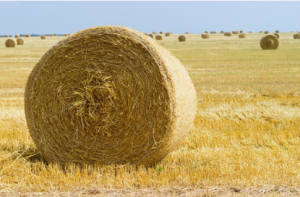Baling twine is made from different types of natural fibres. For instance, you can choose a twine made from Sisal, Reyenvas, or Polypropylene. These materials are all recyclable. You can bring your baling twine to lose or a bag to a collection site. Before bringing your baling twine to the recycling centre, clean it. It should be free of trash or chunks of hay. These twines are not harmful to livestock or wildlife.
Reyenvas baling twine
 Reyenvas baling twine is UV-protected and comes in a variety of colours. It also has a high knot strength and is durable, which ensures that the bale’s weight is uniform. The twine is made using a unique process that involves melting raw materials and passing them through a flat head. This process also ensures that Reyenvas baling twine has superior press density and a low breakage rate. For information, pop over to these guys.
Reyenvas baling twine is UV-protected and comes in a variety of colours. It also has a high knot strength and is durable, which ensures that the bale’s weight is uniform. The twine is made using a unique process that involves melting raw materials and passing them through a flat head. This process also ensures that Reyenvas baling twine has superior press density and a low breakage rate. For information, pop over to these guys.
Reyenvas baling twine is available in many different colours and can be chosen according to the type of baling machine you have. UV-protected baling twine can prevent knotting and is suitable for climates that receive high solar radiation.
Sisal twine
When you’re ready to make hay bales, sisal twine for balers is one of the best options. This type of twine is biodegradable and can withstand 290 lbs. of tensile strength. Unlike polypropylene twine, which is not biodegradable, sisal is strong enough to wrap a bale of hay tightly.
The best sisal twine for baling is made from a naturally biodegradable fibre. It is green and biodegradable. In addition to being biodegradable, sisal twine is also resistant to insects and rodents. It is used by producers of hay bales and is sold in rolls of 10000 feet long.
Polypropylene baling twine
Baling twine is made of polypropylene material. It is generally 0.4 to 2.0 grams per ten inches and has a diameter of 0.08 to 0.15 inches. It is made to meet the specifications of the various types of baling machines. Twine can also be dyed to specified colour or treated with UV additives to prevent premature degradation.
The material is generally used in the agriculture industry. It does not rot and is resistant to most acids and chemicals. It also floats in water. Lastly, it is reusable and biodegradable.
Sisal twine is made from natural fibres.
Sisal twine is a versatile fibre for many crafts and other home decor projects. It is durable and absorbent, which makes it an excellent choice for wrapping items. It can also be used to make hanging ornaments, coasters, trives, and wall decorations.
The fibre is harvested from the leaves of the sisal plant. The plant is a member of the Asparagaceae family and is native to Central America. It has been harvested for its fibre since pre-Columbian times, but its widespread use was spurred by the development of a machine grain binder in the 1880s. As a result, plantings of sisal soon spread to other areas, including Kenya, Tanzania, and the Bahamas.
Cost of baling twine
The cost of baling twine can be limiting when planning your baling operation. Many types of twine are available, and their cost can vary widely. If you’re looking to save money, consider using solar-degradable twine. This type of twine costs less per bale than standard twine and will last much longer. In addition, the time you save wrapping bales with solar-degradable twine will offset the cost.
Polypropylene twine is another option, and this type is highly resistant to mould and decay and is recyclable. It is also colour-coded for easy identification. In addition, you can dye the twine if you wish. This type is also soft on knotters. For information, pop over to these guys.
Osprey injuries caused by baling twine
Ospreys often come into contact with baling twine while nesting. The twine can wrap around the bird’s wing, toe, or leg. Unfortunately, it can also cut off circulation to the limbs, leading to starvation.